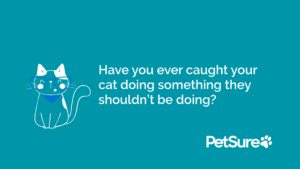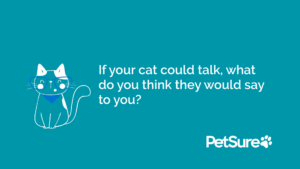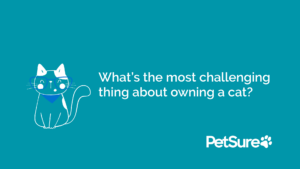Bring Your Dog to Work Day is on the 23rd June so now is the time to get your canine office colleague ready!
Pet friendly workplaces are gaining popularity. Aside from having your best friend at work with you, believe it or not, having your dog at work with you can boost productivity.
Research has shown that having pets around can reduce stress, increase cognitive abilities associated with planning and concentration, improve physical health, and improve workplace relationships through increased social interactions. It stands to reason that when we are happier, healthier, and less stressed, we are likely to do a better job. But before you bundle Fido up for a day in the office, make sure you’ve considered the tips below to help make sure the experience is a positive one for all involved.
Only good bois should go to work
We all want our pups to join us at work, but not all dogs are suited to life in the workplace.
Before bringing your bestie to work with you, consider the following:
Is your dog sociable and friendly around new people, dogs and in new surroundings?
Anxious or nervous dogs may find going to work overwhelming and stressful and may just prefer to stay at home. We have an article about Separation anxiety in dogs: common signs and tips to manage it on the knowledge hub that could help.
Will your dog be boisterous and overexcited in the workplace?
On the flip side, a super excitable and boisterous puppy may be friendly, but may not be the best candidate for a visit to the workplace if they want to play with everyone and everything all day.
Is your dog very talkative?
Dogs that bark or vocalise a lot may be having fun but a lot of noise in the workplace may disrupt your (human) colleagues as well as other pups that may be around.
House trained pups need only apply
There’s nothing more embarrassing than your beloved pooch lifting his leg on your boss’ Louis Vuitton handbag. Well, there might be, but it’s certainly up there for awkwardness. Being toilet trained is essential to ensure your pup leaves no mess behind. One might say, we’re taking care of business.
Is your pup healthy and up to date with his or her preventatives?
Dogs love to play and interact with one another, increasing their risk of spreading diseases around which may include bacterial infections, viruses, or parasites. If your dog isn’t 100% well, best keep him or her at home. Make sure also that your pup is fully vaccinated, and up to date with flea, tick and worm preventatives.
Is your pup a special needs pup?
Before bringing your dog to the workplace, consider other things like accessibility. For example, a dog with arthritis may find it very difficult to access a workplace with lots of stairs, which could make the workplace experience difficult for both you and your fur-baby.
Let me entertain you
Don’t forget to bring something for your pup to do, such as a good chew toy or other favourite toys, as well as a bed to nap on, secure lead and collar (with ID tags on them), food to snack on and a water bowl. Keep your pooch entertained with these training tips and boredom busters for your pets are articles that could help.
“Feeding your dog before you come into the office and taking it for a walk” are the top two tips from PetSure employee, Craig Sapwell who brings his dog Loki into PetSure headquarters often. He also adds, “bring in some toys so they don’t get bored”.

Workplace Considerations
If your pup passes all the above, they are probably ready to follow you into the office any day, but you need to ensure the office space is also ready for your fur baby as well.
Pet friendly workplace?
Understanding your workplace policy on dogs at work is essential before bringing your dog to work with you. This may include considerations around how many dogs can attend the workplace at any one time, areas that dogs can or cannot access and policies around dogs’ behaviour. There may be other unique considerations to do with the premises, for instance, that pets may not be able to access elevators.
Safety first
While the workplace policy may be pet friendly, understanding whether the workplace is suitable for dogs is still important. Very loud or busy workplaces for instance, may not be suitable as they may be stressful or dangerous. It may not be possible to keep your dog safe and secure in the workplace, also making it unsuitable.
Breaktime!
Does your workplace have adequate areas for you to take your dog on breaks? Plan out your day in advance so you can dedicate time to your dog during break times, they’ll need breaks as much as you do.
What’s your plan B?
If your fur baby isn’t enjoying the workplace as much as you have hoped, is there a quiet place they can stay or clam down in, or can you take your pup home easily if need be?
Colleague considerations
While the thought that someone may not love dogs seems outrageous, you may have colleagues who are allergic, fearful of or simply not big fans of dogs or, of dogs in the workplace. It is important therefore to be able to secure your dog safely away from others while they work and ensure that your dog has good manners and you’re able to ask your dog to settle down if he or she does become overly excited or disruptive.
Overall, being able to work with dogs can be a great enhancement to the workplace by bolstering morale, improving teamwork and most importantly reducing stress level for everyone which makes the workplace a happier place to be. By taking the above tips to help ensure your pup, you and your colleagues are all happy, the experience should be a great one!
Enjoy Bring Your Dog to Work Day.
Ref:
5 Reasons to Take Your Dog to Work – The safety, wellbeing & rehab experts (rrp.com.au)
Brower, T, 01/02/2022, Pet-Friendly Workplaces Are On The Rise: Here’s Where To Find Them, accessed on 06/06/2022
Pet insurance can help by covering a portion of the eligible vet bill if the unexpected happens. Because it is difficult to predict the costs of veterinary care, it can help to have measures in place to help prepare for the unexpected. Check out our partner network and explore our policy tools to find a pet insurance policy.
Not all conditions or items are covered by Pet Insurance. Refer to the applicable Product Disclosure Statement for information about coverage and exclusions.








